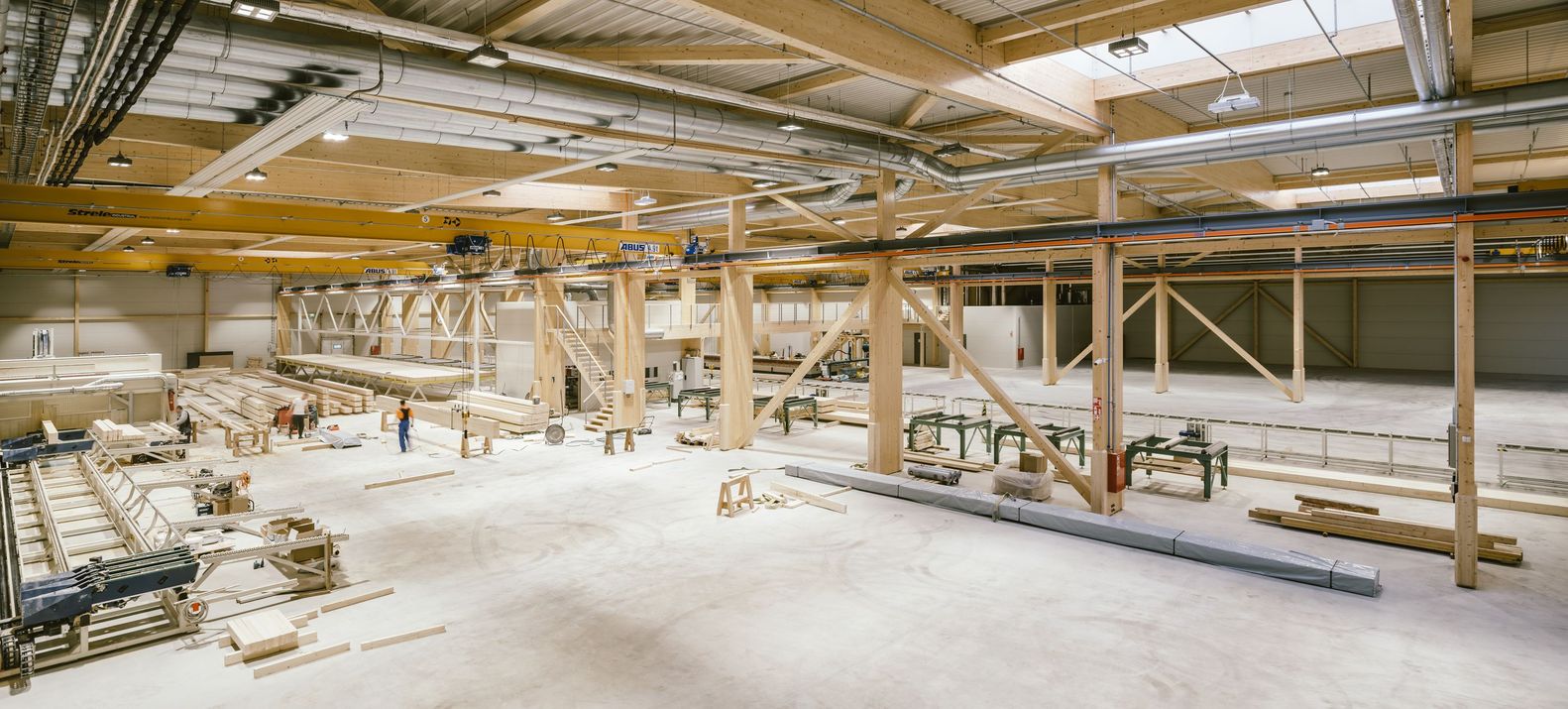CATEGORIES
WPC vs. PVC Wall Panels: Which is the Right Choice for Your Project?
This article provides a comprehensive comparison between WPC (Wood Plastic Composite) wall panels and PVC (Polyvinyl Chloride) wall panels, two popular materials used in construction and interior design. We'll explore their key differences, advantages, and applications, helping you decide which option is the best fit for your specific needs. Whether you're a construction professional, an interior designer, or a homeowner looking to renovate, this guide will provide valuable insights to make an informed decision.
1. What are WPC Wall Panels?
WPC wall panels, also known as Wood Plastic Composite wall panels, are made from a combination of wood fibers and thermoplastics. This unique mixture gives WPC panels the natural aesthetics of real wood with the durability and water resistance of plastic. They are considered more environmentally friendly due to the use of recycled materials like recycled wood and plastic.
WPC are becoming very popular, making it a popular choice for residential and commercial.
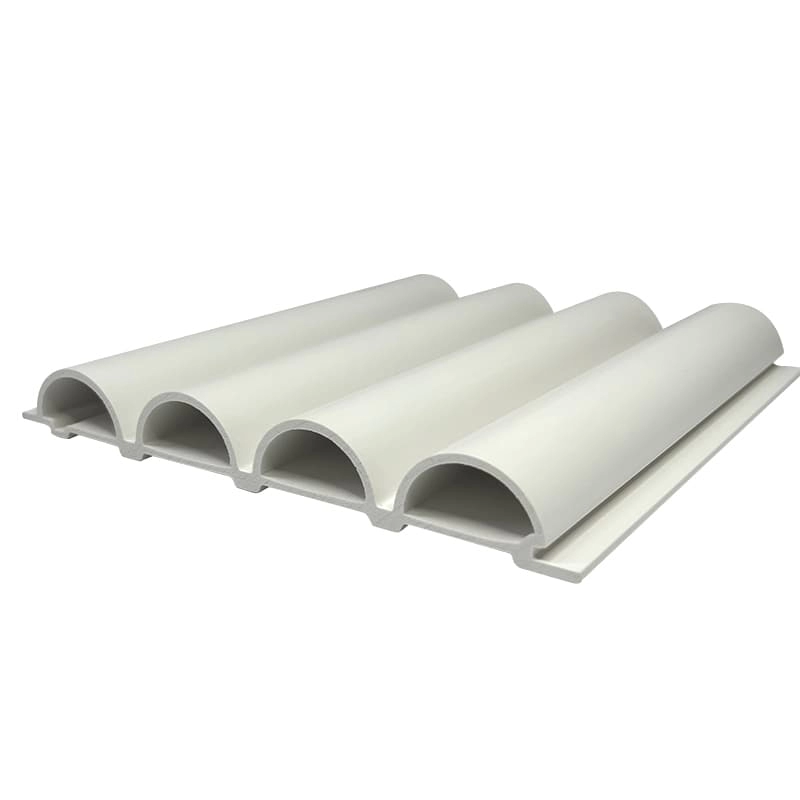
WPC panels offer a wood-like appearance and are incredibly versatile. They can be used both indoors and outdoors, including areas prone to moisture like bathrooms and kitchens. WPC fluted wall panels are a popular design choice, adding a textured, modern look to any space. WPC also boasts excellent UV resistance, ensuring that the panels maintain their appearance over time, even with sun exposure.
2. What are PVC Wall Panels?
PVC wall panels are made entirely from polyvinyl chloride, a widely used plastic polymer. These panels come in a variety of colors and finishes, including options that mimic the appearance of materials like marble or wood. PVC panels are known for their water resistance and durability, making them suitable for areas with high moisture levels.
PVC wall panels are typically lighter than WPC wall panels, making them easier to handle during installation. While they are generally more affordable than WPC, they might not offer the same level of aesthetic appeal or eco-friendliness. PVC is resistant to chemicals and moisture, adding to its longevity. They are also easier to clean because you don't have to seal them.
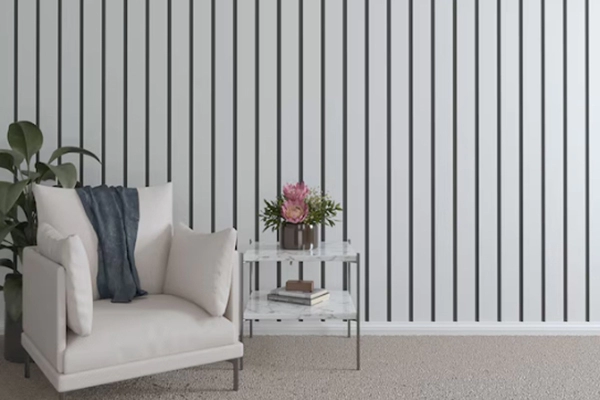
3. What is the Key Difference Between WPC and PVC?
The primary difference between WPC and PVC lies in their composition. WPC wall panel is made from a blend of wood fibers and thermoplastics, while PVC wall panels are made solely from polyvinyl chloride. This compositional difference impacts their properties, including durability, appearance, and environmental impact.
WPC, due to the presence of wood fibers, offers a more natural, wood-like aesthetic. PVC, while available in various colors and finishes, typically has a more plastic-like appearance. In terms of environmental impact, WPC is often considered more environmentally friendly because it often incorporates recycled materials.
4. Which is More Durable: WPC or PVC?
Both WPC and PVC offer excellent durability, but their resistance to different factors varies. WPC wall panels are generally more resistant to scratches, dents, and impacts, thanks to the reinforcement provided by the wood fibers. They are also less prone to warping or cracking under temperature fluctuations.
PVC wall panels, while durable, are more susceptible to scratches and dents. However, they are entirely waterproof, making them ideal for areas with constant exposure to water. Both materials are resistant to moisture and pests, making them superior to traditional wood in these aspects. Choosing the right material will depend on the specific location and the level of wear and tear it is expected to endure.
| Feature | WPC Wall Panels | PVC Wall Panels |
|---|---|---|
| Scratch Resistance | Higher | Lower |
| Impact Resistance | Higher | Lower |
| Water Resistance | Excellent | Excellent |
| Warping/Cracking | Less Prone | More Prone |
| Pest Resistance | Excellent | Very Good |
| Chemical Resistance | Good | Excellent |
5. Is WPC Environmentally Friendlier than PVC?
Generally, WPC is considered more environmentally friendly than PVC. This is primarily because WPC panels often utilize recycled wood and plastic in their composition, reducing the demand for virgin materials. Additionally, WPC itself is often recyclable, contributing to a more circular economy.
PVC, while durable and long-lasting, is a synthetic plastic that is not biodegradable. However, some PVC panels are now being manufactured with recycled materials, improving their environmental profile. When considering the environmental impact, it's crucial to look for certifications and information about the specific product's manufacturing process and material sourcing. For example, Xihongbm uses eco-friendly materials in its production, making its products a responsible choice.
"WPC products often incorporate recycled materials, making them a more sustainable choice compared to traditional building materials." - A study by the University of Maine on the sustainability of wood-plastic composites.
6. What are the Installation Differences Between WPC and PVC Wall Panels?
The installation process for WPC and PVC wall panels is relatively similar. Both types of panels are designed to be lightweight and easy to handle. They can typically be installed using adhesives, nails, or screws, depending on the specific product and the substrate.
However, WPC wall panels, due to their slightly higher density, may require slightly more robust fastening methods compared to the lighter PVC wall panels. It's always recommended to follow the manufacturer's installation instructions for the specific product. Properly installed panels to help ensure long-term performance and prevent issues like warping or detachment.
Internal Link: XHI02 OEM Interior Decorative Wall Panels 3d Ps Ceiling Wall Panel Moulding For House Ps Wall Panel
7. How Do WPC and PVC Wall Panels Compare Aesthetically?
WPC and PVC offer different aesthetic options. WPC wall panels, with their wood fiber content, provide a more natural, wood-like appearance. They can be stained or painted to achieve various colors and finishes, mimicking the look of different types of wood. Fluted wall panels are a popular WPC design choice.
PVC wall panels offer a wider range of colors and finishes, including solid colors, patterns, and even textures that imitate materials like marble or stone. While PVC can mimic the look of wood, it generally doesn't achieve the same level of natural aesthetics as WPC. The choice between WPC and PVC often comes down to personal preference and the desired style of the space.
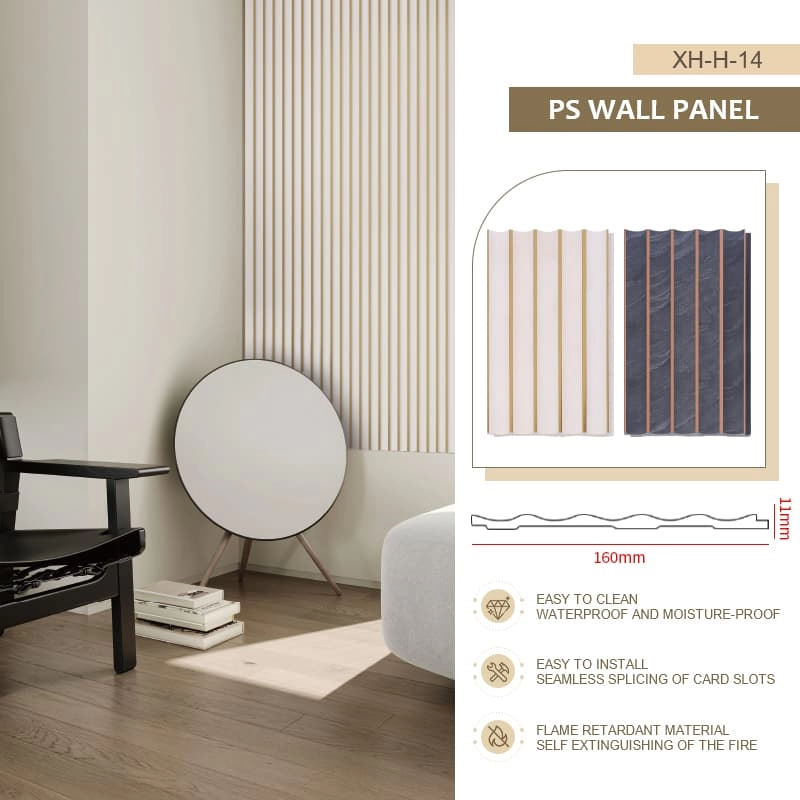
8. What are the Maintenance Requirements for WPC and PVC Panels?
Both WPC and PVC wall panels are known for their low maintenance requirements. Unlike traditional wood, neither material requires regular painting, staining, or sealing. They are both resistant to moisture, rot, and pests, eliminating the need for treatments to combat these issues.
Cleaning WPC and PVC panels is generally easy. Regular dusting and occasional wiping with a damp cloth and mild detergent are usually sufficient to keep them looking their best. Avoid using abrasive cleaners or harsh chemicals, as these can damage the surface of the panels. The minimal maintenance requirements of both materials make them a convenient choice for busy homeowners and commercial spaces.
"The low maintenance requirements of WPC and PVC panels make them a cost-effective alternative to traditional wood, saving time and money on upkeep." - Allen, owner of Xihong Building Material Co., Ltd.
9. Where Can I Use WPC and PVC Wall Panels?
Both WPC and PVC wall panels have a wide range of applications in both residential and commercial settings. Their water resistance makes them particularly well-suited for areas prone to moisture, such as bathrooms and kitchens.
Common applications for WPC wall panels:
- Wall cladding in living rooms, bedrooms, and hallways
- Exterior siding for homes and buildings
- Deck and porch ceilings
- Feature walls and accent panels
Common applications for PVC wall panels:
- Bathroom and shower walls
- Kitchen backsplashes
- Laundry rooms
- Basement walls
- Commercial spaces like restaurants, offices, and retail stores
Internal link: Wpc Multifunctional Panels Bamboo Fiber Fluted Wall Board
10. Cost Comparison: WPC vs. PVC Wall Panels
Generally, PVC wall panels are more affordable than WPC wall panels. This price difference reflects the cost of the raw materials and the manufacturing processes involved. PVC, being a readily available and relatively inexpensive plastic, results in lower production costs.
WPC wall panels, with their combination of wood fibers and thermoplastics, tend to be more expensive. However, the higher initial cost of WPC may be offset by its longer lifespan, greater durability, and reduced maintenance requirements. When considering the cost, it's essential to factor in the long-term value and the specific needs of the project. If durability and a more natural aesthetic are top priorities, WPC may be worth the investment. If budget is the primary concern, PVC offers a cost-effective solution.
Here's a general cost comparison (note: prices can vary significantly based on brand, quality, and region):
- PVC Wall Panels: \$1 - \$5 per square foot
- WPC Wall Panels: \$3 - \$10+ per square foot
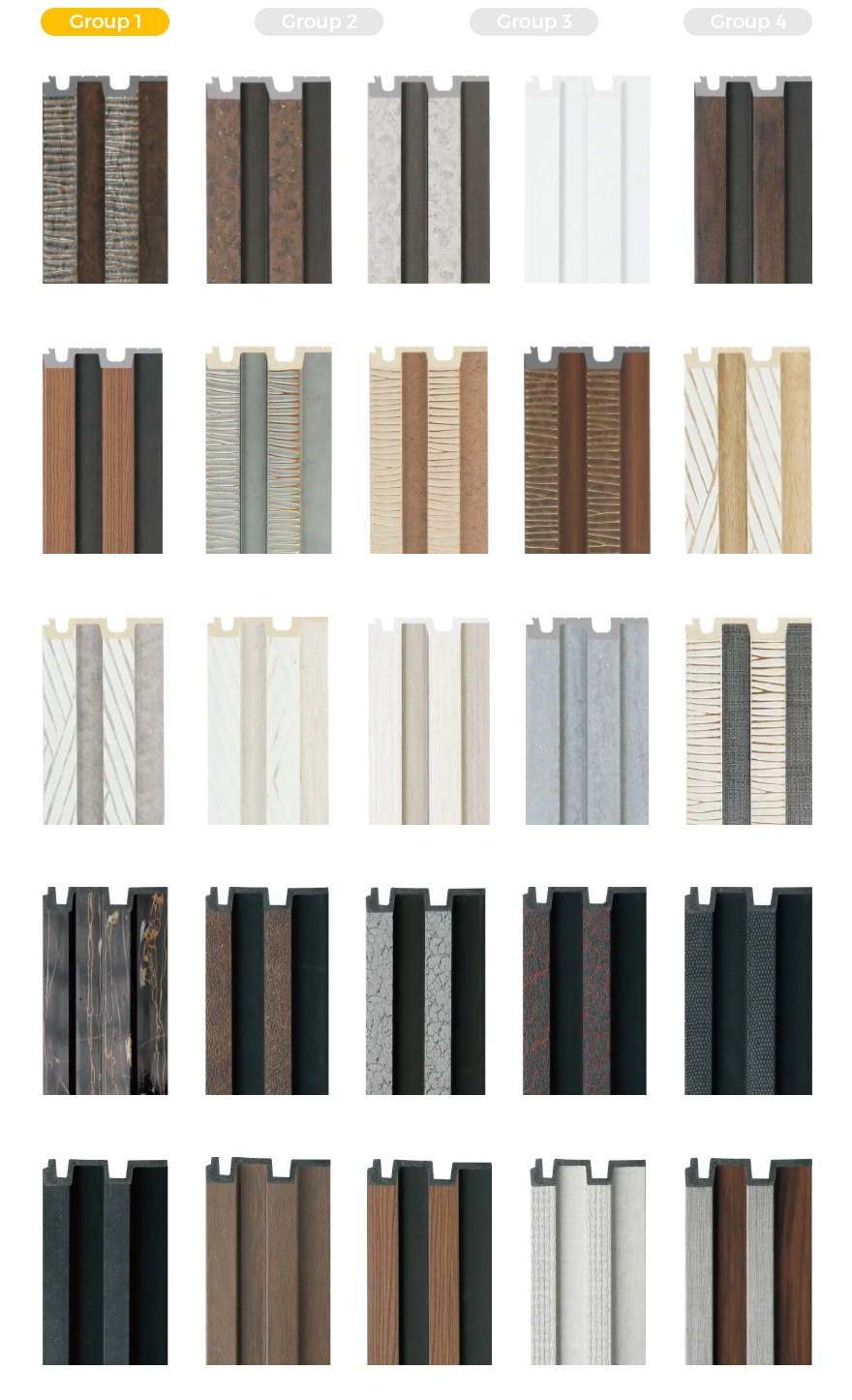
A quick note from a professional, Mark Wilson's Story.
Let's imagine Mark Wilson, a procurement officer in the USA, is sourcing wall panels for a large residential development project. He's looking for a balance between quality, cost, and aesthetics. After researching WPC and PVC options, he decides to visit a trade show in China, like the ones attended by Allen from Xihong Building Material Co., Ltd.
At the show, Mark meets Allen and is impressed by Xihongbm's range of WPC wall panels. He appreciates the wood-like appearance and the company's commitment to using recycled materials. Allen addresses Mark's concerns about quality control, providing detailed product certifications (fire safety ratings, environmental certifications) and explaining their rigorous inspection process. They discuss logistics and payment methods, and Allen assures Mark of timely delivery to avoid project delays.
Mark, initially leaning towards PVC for its lower cost, realizes the long-term benefits of WPC. The enhanced durability, reduced maintenance, and superior aesthetic appeal align with his company's reputation for quality construction. He negotiates a competitive price with Allen, taking advantage of the direct-from-factory pricing that Xihongbm offers. This scenario illustrates a real-world application of the WPC vs. PVC decision-making process, emphasizing the importance of considering all factors beyond just the initial price.
Internal Link: XHH03 Luxury Wall Panel Ps 3d Wall Decor Interior Ps Slat Fluted Wall Board
Important note. In order to get the best prices, it's always best to buy directly from the factory. If you buy WPC or PVC products from a Chinese factory like Xihong Building Material, you will have the advantage of a better price because you won't be dealing with intermediaries.
Summary: Key Takeaways
- WPC (Wood Plastic Composite) wall panels combine wood fibers and thermoplastics, offering a natural wood look with enhanced durability.
- PVC (Polyvinyl Chloride) wall panels are made entirely of plastic, providing excellent water resistance and a wide range of design options.
- WPC is generally more environmentally friendly due to the use of recycled materials.
- PVC is typically more affordable, while WPC offers a higher-end aesthetic and potentially longer lifespan.
- Both WPC and PVC are easy to install and require minimal maintenance.
- Consider buy from countries such as china to get better prices.
- WPC tends to be more resistant to scratches and impacts, whereas PVC excels in resisting moisture.
- The choice of WPC and PVC depends on factors like budget, aesthetic preference, and the intended application.
- WPC panels are typically heavier than PVC panels, but offer enhanced resistance to dents and impacts.
- Both are great choices for building decks and other outdoor applications.
- WPC may be more expensive up front, but may save on costs over the long term, due to lower maintenance requirements and greater resistance to stain damage.
- WPC is generally considered better for the environment due to the higher likelihood of being manufactured with recycled materials and the products themselves being recyclable.
- For both WPC and PVC, you have a wide variety of options to choose from to get the right aesthetic for your project. For instance, you can easily find fluted panels and panels with other finishes.
Internal Link: Bamboo and wood fiber wall panels
